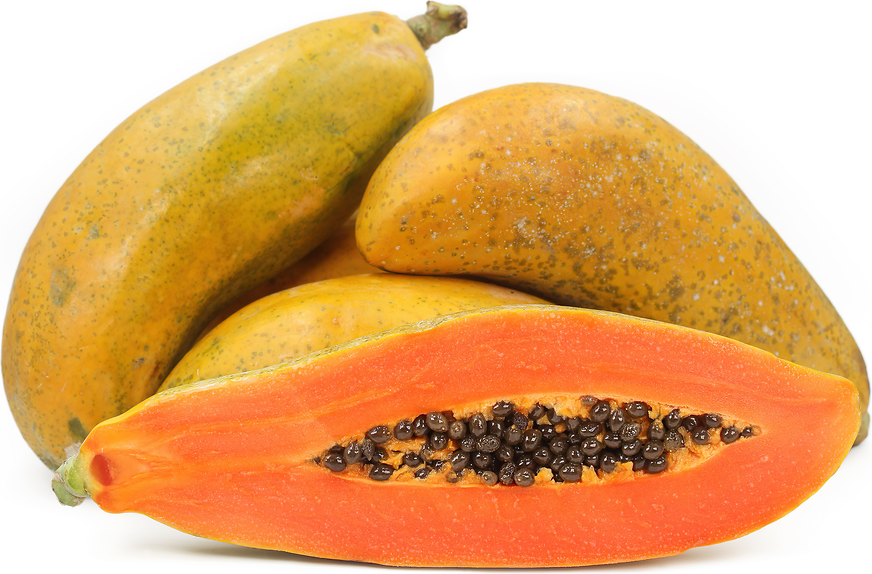


Papaya Andina
Estimated Inventory, lb : 0
Description/Taste
Papaya Andina is typically smaller than tropical papaya, averaging 6-15 centimeters in length, and has an oblong, oval shape. The smooth skin matures from green to a vibrant, yellow-orange, and depending on the variety, the skin may have slight ribbing running the length of the fruit. Underneath the skin, the flesh is dense, firm, and dark orange, encasing a central cavity filled with pulp and many black-brown seeds. Papaya Andina is highly fragrant with a sweet, tropical scent and when raw, the fruit has a mild, almost tasteless, melon-like flavor.
Seasons/Availability
Papaya Andina is available year-round in Peru.
Current Facts
Papaya Andina, botanically a member of the Caricaceae family, are small fruits that grow on an herbaceous tree or shrub that can reach up to ten meters in height. There are many different varieties of papaya that fall under the general descriptor of Papaya Andina, with Chamburo, Col De Monte, and Babaco being the most common cultivars found in Peru. Prolific in the wild and cultivated on a very small scale for local consumption, Papaya Andina is found growing between 1,500-3,000 meters and is favored for its light, neutral flavor for use in juices, marmalades, and cooked dishes.
Nutritional Value
Papaya Andina is an excellent source of vitamins A and C, potassium, and fiber, and also contains some iron, phosphate, and magnesium.
Applications
Papaya Andina, depending on the variety, may be consumed raw but the majority of the varieties are popularly cooked with sugar and lemon or in syrups for added flavor. The fruits are also juiced and mixed with honey, syrup, other fruit juices, and cinnamon to create a refreshing drink. When cooked, Papaya Andina holds its shape well and can be cubed and added to soups and stews, tossed into salads, or stuffed with filling. It can also be used to make jam or marmalade, used to flavor desserts such as ice cream, candies, and baked goods, dried for extended use, or preserved in canned form. In addition to cooked applications, the juice is used to help tenderize meat. Papaya Andina pairs well with strawberries, pineapple, mango, lemon, cinnamon, ginger, nutmeg, mint, and cilantro. The fruit will keep up to one week when stored in a cool, dry, and dark place or stored whole in a plastic bag in the refrigerator.
Ethnic/Cultural Info
In Peru, Papaya Andina is a favored plant for home gardens. Considered highly ornamental with its prolific fruit growth, the papaya plants are commonly planted around villages, in home gardens, and on small farms for year-round harvest. These wild varieties have remained localized to the Andean region in South America and have not been extensively researched for export, but Peru has designed community programs to educate locals on the fruit to celebrate the unique varieties. Every December in Arequipa, Peru, “Dia de La Papaya Arequipena” is observed to bring awareness and to protect the wild varieties from becoming extinct.
Geography/History
Papaya Andina is native to South America in the highland regions of the Andean mountains, but its history remains mostly unknown. Believed to be growing wild since ancient times and recently cultivated on a small scale, Papaya Andina can be found in Ecuador, Venezuela, Chile, Colombia, and Peru.
Recipe Ideas
Recipes that include Papaya Andina. One




